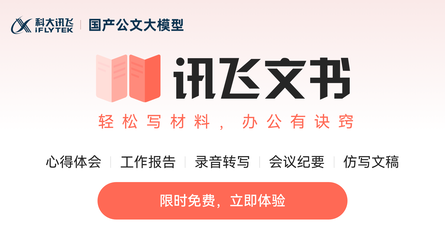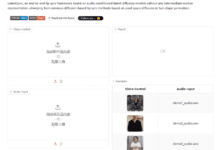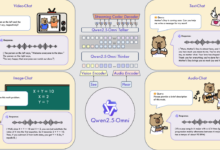
Many of you have probably heard the jokes about robots taking over the world. These jokes were once based on a seemingly unattainable reality, but today there is real anxiety lurking behind them. Artificial intelligence (AI) is no longer a sci-fi concept, but a real and increasingly capable technology. Despite the fact that technologies like ChatGPT Tools like these dominate the headlines, but in reality, people can no longer do their daily online activities without AI.
So what exactly is AI? It exists in many forms, from simple automation (e.g., controlling ad pushes, path planning for self-driving cars, and chatbots that answer questions when shopping online) to programs with some social intelligence. For example, algorithms determine which ads users see online;Sora Such a program could generate full videos based on text prompts. While no AI has yet reached Westworld ( Westworld While AI chatbots have been used to create the kind of true self-awareness depicted in the "AI for Friends" article, there have been a number of "companion" AI chatbots designed to play the role of a friend. There are even AI-generated avatars and social media stars on the web.
AI is also becoming visible in the schooling scene. Some edtech products employ adaptive learning techniques (a form of AI), and facial recognition technology also falls under the AI umbrella. However, generative AI is a relatively new field, especially in classroom settings. Such AI tools, such as ChatGPT cap (a poem) Gemini, able to create complete essays based on simple prompts. While people in the Google Docs or predictive text encountered in text messages is no longer unfamiliar, but the generation of complete works by programs based on simple questions and answers is still considered a novelty. While the ability of such tools to create truly original content has yet to be improved, their potential has attracted the attention of many educators.
Current challenges
As technology evolves and becomes more complex, it is entirely understandable that people are uneasy about the real and anticipated challenges. Here are some current concerns:
- Risk of abuse
- Deepfakes (Deepfakes) technology generates realistic-looking images, videos and audio that mimic celebrities, politicians and even users' family members. This also includes the use of AI to generate nude images or pornographic videos without the person's consent. There are already cases of teenagers using so-called "one-click strip" apps to generate nude photos of their classmates.
- Bias and misinformation
- AI depends on its training data sources for learning, and therefore inherits biases, misinformation, and problematic content from the source data. For example, if the development team is unrepresentative, implicit bias will almost certainly be embedded in the framework of the tool, as exemplified by racial discrimination in facial recognition technology.AIs can also "spout serious nonsense," i.e., create "AI illusions," or even claim to have emotions or human senses. AI can also "talk serious nonsense", i.e. create "AI hallucinations", fabricate completely false information, or even claim to have emotions or human senses.
- environmental impact
- The training and operation of generative AI consumes enormous amounts of energy and other resources, including large amounts of fresh water used as a cooling mechanism. Training an AI like
GPT-4Such large-scale models can consume millions of kilowatt-hours of electricity and large amounts of water. The widespread use of AI has undoubtedly exacerbated these environmental burdens in an era of already dire climate problems.
- The training and operation of generative AI consumes enormous amounts of energy and other resources, including large amounts of fresh water used as a cooling mechanism. Training an AI like
- ethical dilemma
- AI tools crawl content from a wide range of sources to learn and generate, and their output is often a hybrid of many others' works, but usually lacks full or consistent attribution to the original author. This raises serious questions about intellectual property protection. Moreover, in the context of generative AI, data privacy is a murky and multi-layered issue, with a lack of transparency about how user input is used and stored.
- Plagiarism
- One of the main concerns for teachers is students using AI for plagiarism. Already, students are submitting papers generated by AI for their own assignments.
How to address these challenges
Some educators may feel overwhelmed in the face of many concerns and uncertainties. But the key is to respond positively, not panic. Here are some possible steps and resources available.
Addressing the risk of abuse
- prevention is better than cure: Popularize knowledge through AI literacy education and organize discussions to make students aware of the ways in which the technology can be used in a harmful way.
- Raising student awareness: Inform students of the depth of falsified content that already exists on the Internet and maintain critical thinking about audio and video that is particularly sensationalized or widely disseminated to stir up emotions. While it is still possible to detect some breaches, it is becoming increasingly difficult to recognize them.
- Emphasizing the principle of "consent" in content creation: Just as it is important to ask permission before taking a photo or video, it is critical to get permission before feeding someone else's image into an AI tool. Develop empathy by asking, "How would you feel if someone posted embarrassing content about you or by you?" to foster empathy.
- Clarification of consequences: Clearly inform students of the serious consequences of using AI to generate pornographic images. Remind them of the possibility of
TikTokYou may see advertisements for such apps on platforms such as YouTube. Even though they may find it interesting out of curiosity or because they think "the photos aren't real," using AI to generate nude photos of others is harassment and likely illegal. Not only does it hurt the victim, but it can also involve legal liability. Victims should inform a trusted adult, report it to the authorities, and report it at CyberTipline.org.
Addressing bias and misinformation
- Showcase Examples: Show students images generated by the AI tool using specific cues and discuss the biases that are reflected in them (e.g., the AI may tend to generate gender- or race-specific images when cued with "doctor" or "CEO").
- Utilization of media resources: Drawing on the medium of science fiction movies, episodes, and books, students are led to discuss topics such as algorithmic bias and the flaws of facial recognition technology.
- Verification of sources of information: Remind students to ask for links to sources of information when using AI for research (some AI tools will provide them when asked). Ask students to check the reliability of these links on a case-by-case basis.
- Explaining AI hallucinations: illustrates that AI combines information from its dataset to produce completely fabricated content. the AI tool may also claim to feel love, experience a variety of human senses, and so on. Thus, it is important for students (especially younger students) to understand that AI chatbots sound like real people, but that is just by design - designed by real people.
Addressing environmental impacts
- Providing background knowledge: Provide students with age-appropriate background information on global climate change and Earth's resources.
- Informing resource consumption: Make students aware of the huge load of resources required to use generative AI. This can lead to a discussion: How do technological products such as cell phones and computers affect the Earth? How are advanced technologies affecting the Earth's environment?
- Focus on Solutions: To present researchers and projects that are working to limit these negative impacts and find solutions to environmental problems.
Andrea, a 17-year-old student, mentioned, "Transparency is becoming critical as more and more companies begin to incorporate AI into their products."
Responding to ethical dilemmas
- Exploring Ethical Ambiguities: Discusses the ethical issues present in the way generative AI operates and expands to a broader level to explore the implications of technological developments and how society should respond.
- Focus on the digital divide: Discuss the existing digital divide and what new technological developments mean for those who cannot afford them. What happens when such tools start charging for more features?
- Discussion of intellectual property protection: What rules need to be in place to protect intellectual property if you want to take action before potential problems occur? Do existing copyright laws apply to AI-generated content?
- Exploring data privacy: What information does AI currently collect? What might it collect in the future? How does it use the information provided by users? Discuss the potential impact that an AI capable of integrating data from across the user's network could have.
Tackling plagiarism
- Hands-on with AI: Educators should try out the AI platform for themselves to understand the boundaries of its capabilities. Enter your own teaching cues to test it.
- Familiarize yourself with student writing styles: Learn as much as you can about the characteristics and level of each student's writing.
- Classroom Writing: To organize some writing tasks in the classroom, taking care to consider the practical difficulties that some students may have.
- Utilizing Formative Evaluation: Utilize formative assessment tools to consistently observe student progress.
- Optimizing homework design: Evaluate current homework prompts and try to incorporate a student-centered approach that emphasizes emotional intelligence and personal experience. As one teacher said, "If you don't want generalized answers, don't ask generalized questions."
- Co-testing AI tools: Test AI tools with students and openly discuss their limitations.
- "Trojan horse".: Include a specific word or phrase in the assignment requirements that is not visible to the student. The educator can then use this keyword search to determine if the student pasted the prompt directly into the AI tool. (For example, requiring an essay to include a word that is out-of-the-way but slightly related to the topic would not normally be generated naturally by AI.)
- Use of detection tools (as a last resort): Some AI content detection tools exist on the market, but it's important to note that they are not perfect, can have high false positives (some studies have noted that it's close to 50% at times), and can misclassify original content as plagiarized.
One 18-year-old student, Rose, commented that, "Students like
ChatGPTSuch programs lack the ability to make an emotional connection with the reader. We cannot deprive writing of human emotion."
What this means for the future
Technological developments don't stop and wait for people to think deeply and plan for all the implications, so educators can explore this uncertainty with their students.
- Smarter and faster
- Over time, AI will only become more powerful and further integrated into everyday life, and the breadth and depth of its impact may be greater than we currently expect, in both positive and negative ways.
- New barriers to entry
- In education, the emergence of more powerful AI tools may not be synchronized to solve the problem of universality. The digital divide already exists, and the likes of
ChatGPTSuch tools are already available in paid versions. This means that the few students who can afford these tools will gain an additional advantage, further widening the gap between large families or those whose schools cannot afford them.
- In education, the emergence of more powerful AI tools may not be synchronized to solve the problem of universality. The digital divide already exists, and the likes of
- Exacerbated privacy concerns
- The full impact of AI on privacy is unknown. What is certain, however, is that data has become an extremely valuable commodity. And, as AI continues to learn through user input, any personal information a user contains can be collected and utilized.
- Job market and skills change
- How AI will change the job market can only be guessed at this point. How to prepare students for a future world we can't even fully imagine is a real challenge.
How to respond to future considerations
- Play as a futurist: Ask students how they think AI will reshape the job market and what skills they think will be needed in the future.
- Design project-based learning: Have students complete a project-based learning task by conducting research around this technology that will surely shape their lives.
- Discussion of regulation and policy: Lead a discussion about how AI should be regulated and what government policies should be put in place.
As technology has evolved at a rapid pace, we've learned to embrace it," said Audrey, a 17-year-old student
ChatGPTThere should be no exceptions."
Other ways of applying AI
On the other side of all these concerns, however, is the utility of AI as a tool. Imagine if AI programs could be asked to help write lesson plans, parent letters, or emails. Educators can try to explore how AI can serve them. After all, it is first and foremost a tool! Is it possible that AI could provide something that teachers desperately need but are always lacking (in addition to funding) - time?
- Making AI work for you: Refer to educational resource sites like Ditch That Textbook for practical advice on how teachers can utilize AI, such as for generating draft syllabi, creating reading materials of varying difficulty levels, and designing practice questions.
- Guided Programming Practices for Students: Have students write their own simple algorithms using programming tools.
- comparative writing: Have students write in response to specific prompts and then compare their work with the results generated by the AI program to delve deeper into the differences between the two.
- AI Art Generation: Using AI to generate artworks with a concern for the ethics of their source material.
- Exploring Mathematical Principles: Delve into the math behind algorithms and machine learning.
- Discussing the use of AI in science: Explore how technologies such as algorithms or generative AI can advance scientific research (e.g., in areas such as drug discovery, climate model predictions, etc.).
- Linking history and society: Discuss the impact of new technologies, including AI, on civilizations and societies throughout history and today.
Educator Patricia Monticello Kievlan shares, "I usually discuss the most common college application essay topics, but this year I'm letting the
ChatGPTto write these essays! We'll discuss what AI does well and what it doesn't, and how students can use it to help with the application process: for example, making a list of application deadlines and required paperwork, or creating a timeline for submitting application materials."


















